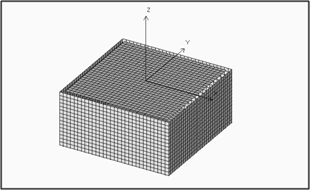The occurrence of irregular frequencies in unsteady hydrodynamic analyses of floating structures using a boundary-integral formulation causes large errors in the solution over a substantial frequency band around these frequencies. These errors cause abrupt variations in the calculated hydrodynamic coefficients (as shown by Du et al [14]). This is the case in all forms of surface piercing hulls but especially when multi-hull structures and/or the hydrodynamic interaction between multiple structures are considered. In such cases, there exists the real physical phenomenon of resonant wave frequencies due to standing waves formed between the hulls, and this occurs in a similar manner to irregular frequencies. Distinguishing between these two phenomena occurring at closely spaced frequencies is difficult.
The irregular frequencies of the source distribution approach coincide with the
eigenvalues of the interior Dirichlet problem, and are of purely numerical problem with no
physical explanation. Hence, they must be removed. In Aqwa, the internal lid method is
employed for the source distribution approach. In this method, it is assumed that a fluid
field exists interior to the mean wetted body surface , satisfying the same free-surface boundary condition experienced by the
floating body. The vertical component of this interior fluid velocity is forced to be zero.
In Aqwa, this interior mean free surface is represented by a series of panels (interior
LID panels). As shown in Figure 4.1: Discrete Wetted Hull Surface and Internal LID Panels, the discrete wetted hull
surface and a series of LID elements are created. The original source distribution
integration, Equation 4–22, is extended to cover both the mean wetted
hull surface and the interior imaginary mean free surface:
(4–24) |
where is the total number of the interior LID panels over the interior imaginary
mean free surface
. All the panels involved in Equation 4–24 are
referred to as the diffraction panels.



